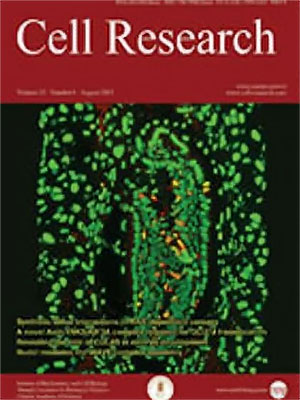Volume 1 Issue 1, March 1990: 89-94
ORIGINAL ARTICLES
The distribution of calmodulin and Ca2+-activated calmodulin in cell cycle of mouse erythroleukemia cells
Jinsong You1, Suwen Li1, Duanshun Wang1, Yun Zhang1, Daye Suen2 and Shaobai Xue2
1Department of Biology, Beijing Normal University
2Department of Biology, Hebei Normal University, Shijiazhuang, Hebei, China.
Correspondence: Xue Shaobai,
Cell proliferation is accompanied with changing levels of intracellular caimodulin (CAM) and its activation. Prior data from synchronized cell population could not actually stand for various CaM levels in different phases of cell cycle. Here, based upon quantitative measurement of fluorescence in individual cells, a method was developed to investigate intracellular total CaM and Ca2+-activated CaM contents. Intensity of CaM immunoflurescence gave total CaM level, and Ca2+-activated CaM was measured by fluorescence intensity of CaM antagonist trifluoperazine (TFP). In mouse erythroleukemia (MEL) cells, total CaM level increased from G1 through S to G2M, reaching a maximum of 2-fold increase, then reduced to half amount after cell division. Meanwhile, Ca2+- activated CaM also in creased through the cell cycle(G1, S, G2M). Increasing observed in G1 meant that the entry of ceils from G1 into S phase may require CaM accumulation, and, equally or even more important, Ca2+-dependent activation of CaM. Ca2+- activated CaM decreased after cell division. The results suggested that CaM gene expression and Ca2+-modulated CaM activation act synergistically to accomplish the cell cycle progression.
Cell Res 1: 89-94; doi:10.1038/cr.1990.9
FULL TEXT | PDF
Browse 2587


